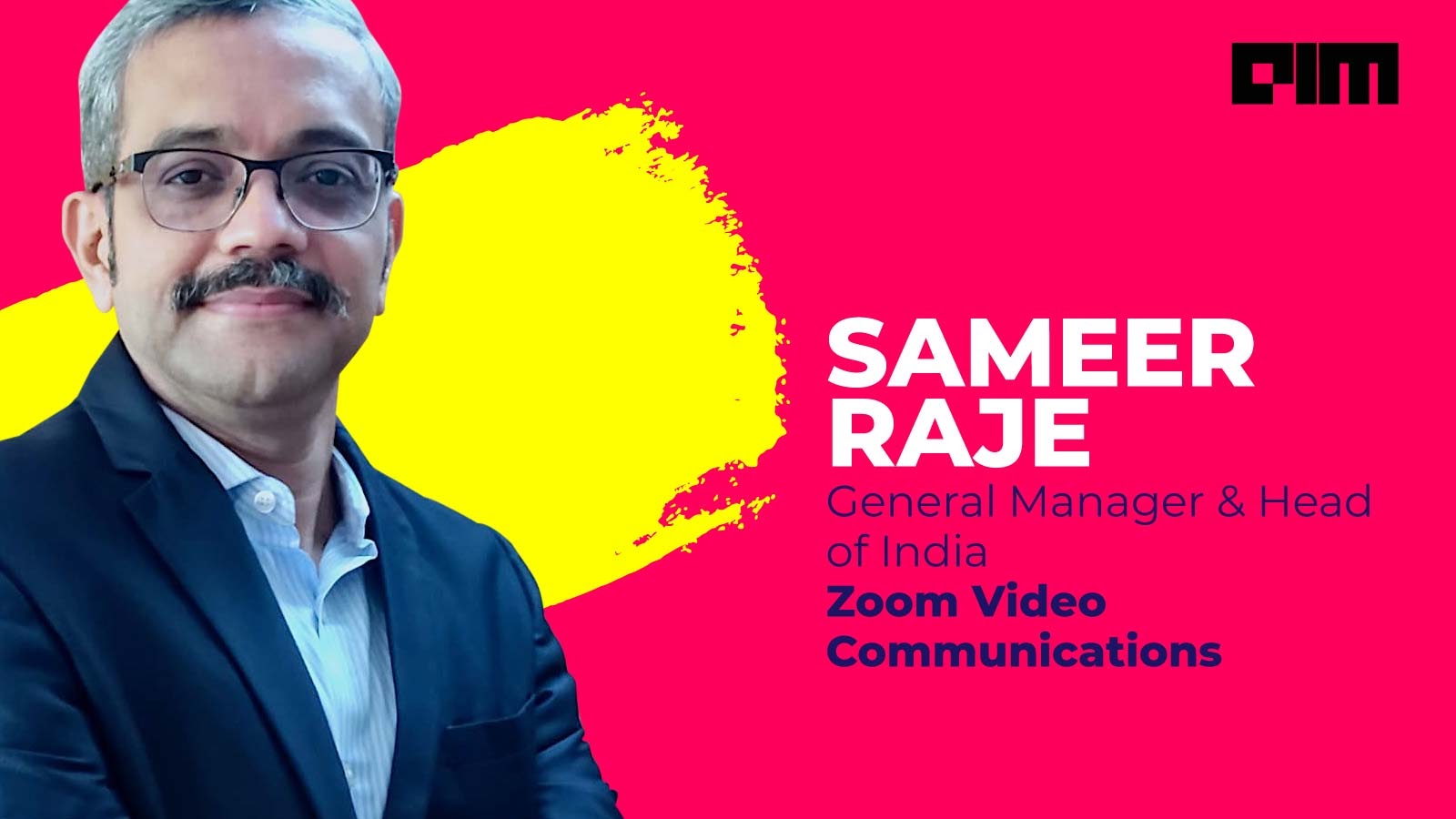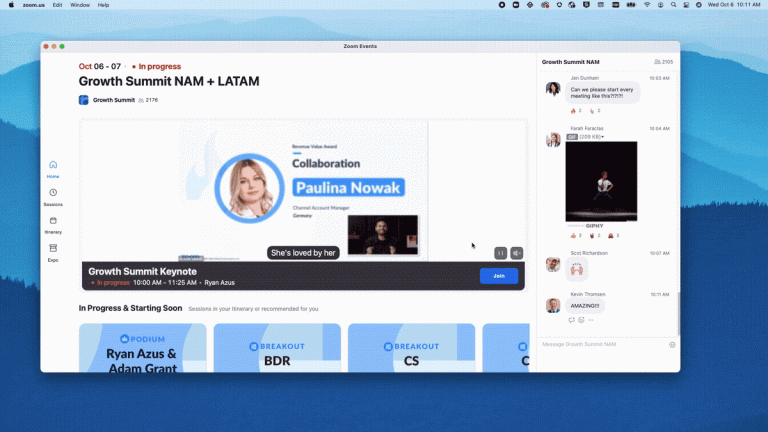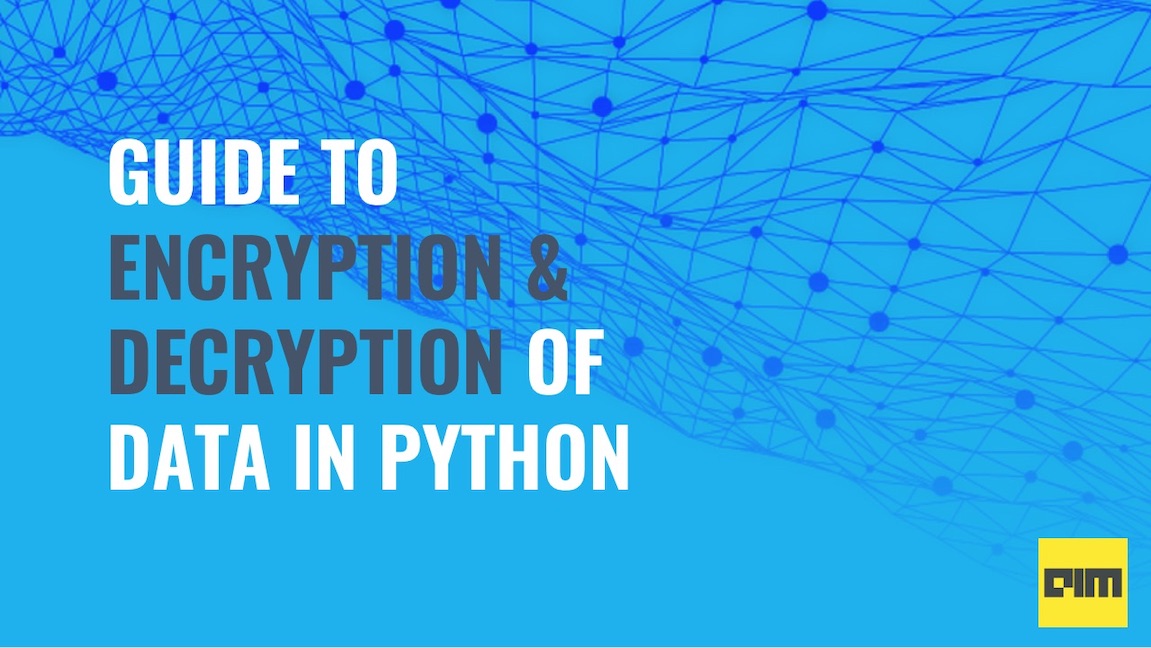What do Google, Xerox and Zoom have in common? You guessed it right; all are now verbs. Google became a stand-in for search, Xerox for photocopy and Zoom for video conferencing.
Zoom entered the verb club as late as 2020. A shift to remote working in the wake of the pandemic accelerated Zoom’s transformation from a fledgeling startup to one of the most valuable companies in the world (valued at $117 billion, as of December 2020).
Analytics India Magazine caught up with Zoom’s General Manager and Head of India, Sameer Raje, to better understand the platform, its exponential growth, and security concerns.
Excerpts:
AIM: What changed in 2020 for Zoom Communications?
Sameer Raje: Nobody anticipated what was coming. Zoom started as a frictionless or a friction-free video-first platform in 2011. Meaning, Zoom is designed to offer video first communication, and everything else is built around it. Other platforms have video as the last component.
When we built our platform, we built it to scale, adjust to fluctuating bandwidth, and cater to the rising demand. As many as 40,000 attendees can participate in a video webinar and still have a flawless meeting experience on our platform.
The simplicity of the platform struck a chord with the people. Zoom took off by February 2020. A simple interface, easy download option etc made Zoom stand out from similar platforms.
Big corporates are quick to adopt the latest technologies. On the other hand, you have segments such as the traders’ community with little exposure to technology. When the pandemic struck, even those segments were forced to adapt. Zoom was highly favoured because it is simple, easy to use, and works even in remote locations with low internet bandwidth. The ability to stay connected at the lowest possible data packet is the beauty of the platform.
AIM: How did Zoom scale quickly to handle the sudden surge in users?
Sameer Raje: We operate data centres across the world. Some of these data centres are our own, while others are co-location. We already have two data centres in India–one in Mumbai and the other in Hyderabad. Being a cloud service, it is very easy to augment our capacity.
In India, we work with some of the most renowned telcos. We are co-located in their data centres, while also maintaining a few of our own. So it is very easy to scale up in a short period. In addition, we work with partners such as Amazon and Oracle to support us in this process in India and in other locations.
AIM: What are your comments on the privacy concerns around Zoom?
Sameer Raje: There are multiple aspects to the privacy issue. We take privacy very seriously, and we have the best practices in place, such as encryption technology, high-end security protocols, etc.
A lot of technology platforms are commonly used in corporate set-ups. To make the whole experience secure, companies have a slew of measures in place. However, when the pandemic began, almost everyone started working on virtual platforms. Even people who were otherwise not exposed to technology on such a scale were now forced to adapt. Unaware of consequences, there were several lapses of judgement on the users’ end. Many started sharing meeting links, sometimes even passwords on public platforms, paving the way for bad actors to break in. It is not just with Zoom, but in general too, cybersecurity issues saw a 40 percent increase during this time.
When people think of privacy and security, they need to understand that we don’t store any information. Unless you choose to record, the meeting and its content vanish once the call ends.
That said, we are not averse to saying there were minor mistakes from our side. As a corrective measure, we went on a ‘90-day plan’, hired third-party vendors to analyse our platform’s security features. We also interacted with our users to help pinpoint issues. Our CEO Eric Yuan personally spoke to customers, which helped us improve and provide the kind of support our customers need. We made many changes: we updated our password requirement from 8 digits to 10 digits; went from 256-bit encryption to 256-bit AES GCM encryption; introduced a security tab; and designed a coaching and training plan for certain users.
AIM: Tell us about the 90-day plan.
Sameer Raje: In the first few months of 2020, Zoom experienced a sudden demand unlike ever seen before. We realised we needed to include an ‘equivalent focus’ on security and privacy issues as we began hosting hundreds of millions of daily participants.
Starting April 1, 2020, we rolled out a 90-day program to focus on seven commitments towards the security and privacy aspects of our platform:
- Enacting a feature freeze for 90 days to redirect all engineering resources and efforts towards trust, safety and security issues.
- Conducting a comprehensive review with third-party experts and representatives.
- Preparing a transparent report that details information on requests for data, records, or content.
- Enhancing the current bug bounty program.
- Launching a CISO council in partnership with leading CISOs from across industries to facilitate dialogue on security and privacy best practices.
- Conducting a series of simultaneous white box penetration tests.
- Host a weekly webinar to provide privacy and security updates to our community.
AIM: Indian government raised a few concerns on security and privacy with Zoom. What was the company’s response to that?
Sameer Raje: At Zoom, we are transparent and honest in sharing the information. The condition is the same in India as it is in the US where all our information and company holding patterns are available in the public domain. In India, we engaged with the Ministry of Electronics and Information Technology. We have shared the relevant technology of our platform, information on our security practices, and how we take care of our users. We also underwent stringent validation checks.
AIM: What are your plans for the Indian market?
Sameer Raje: India is a huge market in terms of consumption. The country also has a huge talent pool. Our goal is not only to tap into the potential market but also the talent. We have announced our Tech Centre in Bangalore, and we are hiring big time; I’m excited because that will be the largest of its kind, outside of the US. Our Indian team is also growing. It was just me two years ago, but now the headcount has grown to 100 and will continue to grow in the future too.


















































































